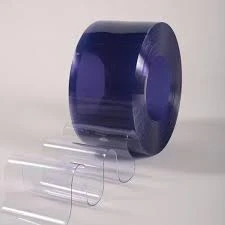- Afrikaans
- Albanian
- Amharic
- Arabic
- Armenian
- Azerbaijani
- Basque
- Belarusian
- Bengali
- Bosnian
- Bulgarian
- Catalan
- Cebuano
- Corsican
- Croatian
- Czech
- Danish
- Dutch
- English
- Esperanto
- Estonian
- Finnish
- French
- Frisian
- Galician
- Georgian
- German
- Greek
- Gujarati
- Haitian Creole
- hausa
- hawaiian
- Hebrew
- Hindi
- Miao
- Hungarian
- Icelandic
- igbo
- Indonesian
- irish
- Italian
- Japanese
- Javanese
- Kannada
- kazakh
- Khmer
- Rwandese
- Korean
- Kurdish
- Kyrgyz
- Lao
- Latin
- Latvian
- Lithuanian
- Luxembourgish
- Macedonian
- Malgashi
- Malay
- Malayalam
- Maltese
- Maori
- Marathi
- Mongolian
- Myanmar
- Nepali
- Norwegian
- Norwegian
- Occitan
- Pashto
- Persian
- Polish
- Portuguese
- Punjabi
- Romanian
- Russian
- Samoan
- Scottish Gaelic
- Serbian
- Sesotho
- Shona
- Sindhi
- Sinhala
- Slovak
- Slovenian
- Somali
- Spanish
- Sundanese
- Swahili
- Swedish
- Tagalog
- Tajik
- Tamil
- Tatar
- Telugu
- Thai
- Turkish
- Turkmen
- Ukrainian
- Urdu
- Uighur
- Uzbek
- Vietnamese
- Welsh
- Bantu
- Yiddish
- Yoruba
- Zulu
industrial door curtains
Industrial Door Curtains Enhancing Efficiency and Safety in Commercial Spaces
In the realm of industrial operations, efficiency and safety are paramount. Among the many tools and techniques available to enhance workplace functionality, industrial door curtains have emerged as a vital solution. These versatile barriers not only streamline operations but also create safer environments for employees and equipment.
Industrial door curtains, often referred to as strip curtains or plastic curtains, are made from durable materials such as PVC or vinyl. They are designed to hang in doorways and openings, providing a flexible barrier that can withstand heavy use. The primary function of these curtains is to separate different areas within a facility, aiding in temperature regulation, dust and debris control, and noise reduction.
One of the most significant advantages of industrial door curtains is their ability to control the environment within a workspace. In manufacturing plants, warehouses, or food processing facilities, maintaining specific temperature zones is crucial for both product quality and employee comfort. By utilizing door curtains, businesses can create areas that are insulated against temperature fluctuations, which can enhance energy efficiency and reduce heating or cooling costs.
Moreover, industrial door curtains play an essential role in controlling the passage of contaminants
. In environments where cleanliness is critical—such as pharmaceutical or food production facilities—these curtains act as a barrier against dust, insects, and other pollutants. This helps to maintain hygiene standards while preventing cross-contamination between different zones of production.industrial door curtains

In addition to environmental control, industrial door curtains contribute significantly to employee safety. Forklift traffic and personnel movement can pose hazards in busy industrial settings. Door curtains provide a clear visual indication of entry points while allowing for visibility and easy movement of staff and materials. Their flexible nature means that employees can pass through without needing to open heavy doors, reducing the risk of accidents.
The benefits of industrial door curtains extend to noise reduction as well. Many industrial operations involve heavy machinery that generates significant noise levels. By installing curtains, companies can create quieter areas where employees can communicate effectively without raising their voices over the din of machinery. This not only improves working conditions but also enhances productivity.
Another advantage of industrial door curtains is their cost-effectiveness. They are generally easier and less expensive to install than traditional doors. Additionally, since they require minimal maintenance, businesses can save on replacement costs over time. The durability of materials used in these curtains often means they can withstand harsh conditions without wear and tear.
To maximize their effectiveness, organizations must choose the right type of industrial door curtain based on their specific needs. Factors such as material thickness, color, and size can all influence performance. It's essential for companies to assess their operational requirements and consult with suppliers to select the optimal curtain solution.
In conclusion, industrial door curtains prove to be an invaluable asset within commercial settings. They not only enhance efficiency by improving thermal insulation and reducing noise but also contribute to a safer and more organized workspace. By investing in these adaptable solutions, industries can promote better working conditions while simultaneously protecting their assets and boosting productivity. As the global economy continues to evolve, these curtains will undoubtedly remain a staple in modern industrial practices.
-
Transparent PVC-Folie – Flexible & Durable Clear Plastic Sheets for Versatile UseNewsJul.05,2025
-
High-Quality Cold Room Door Curtains Durable PVC Strip Curtains for Cold StorageNewsJul.05,2025
-
Shop Yellow Ticking Stripe Curtains – Classic Style, Durable Fabric, Multiple Colors AvailableNewsJul.05,2025
-
Plastic Curtain for AC – Energy Saving & Easy Installation Perfect for Room and Freezer UseNewsJul.04,2025
-
Industrial Strip Curtains - Durable PVC & Plastic Solutions for Industrial DoorsNewsJun.24,2025
-
PVC Curtain Strip – Durable Standard PVC Strips for DoorsNewsJun.10,2025



